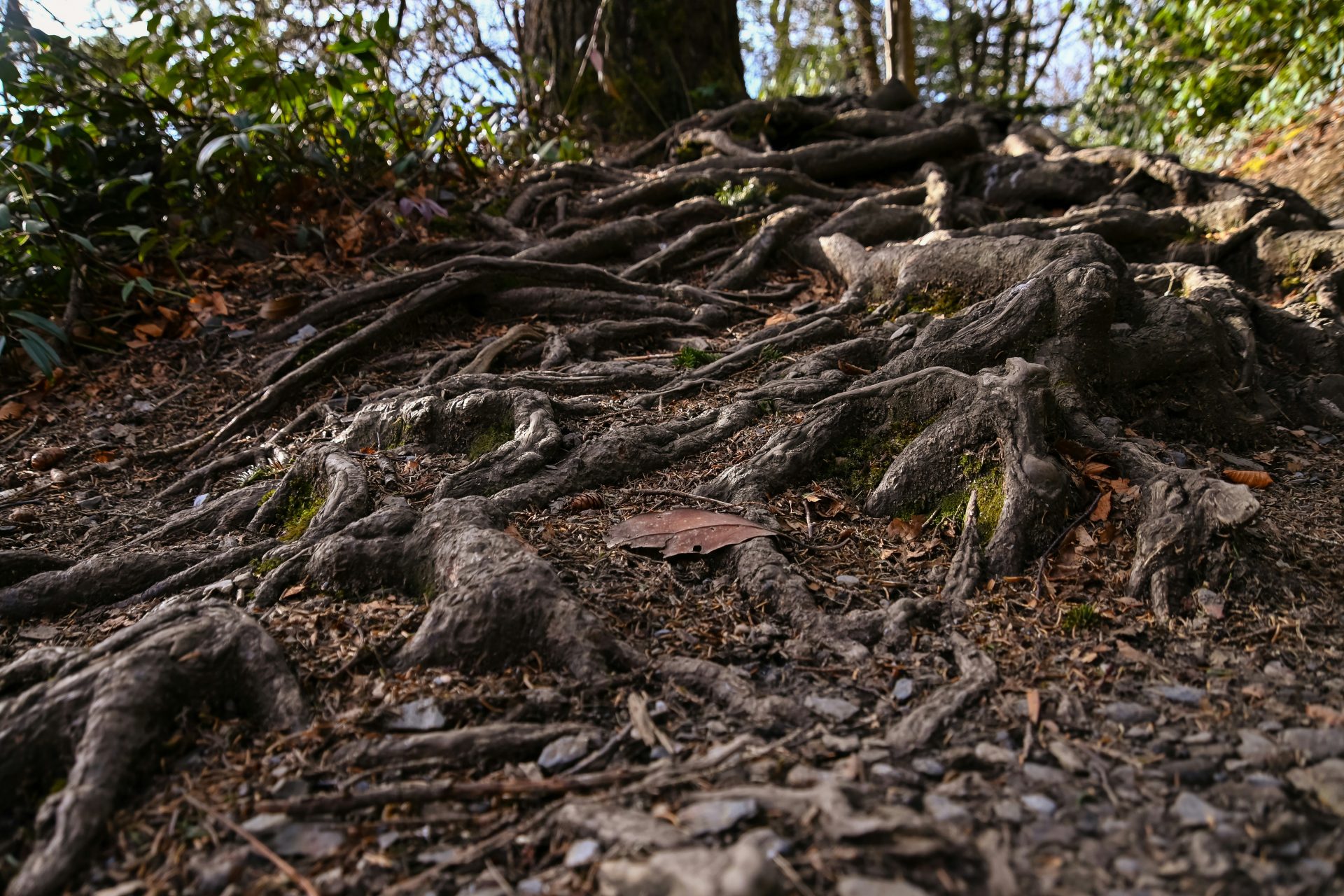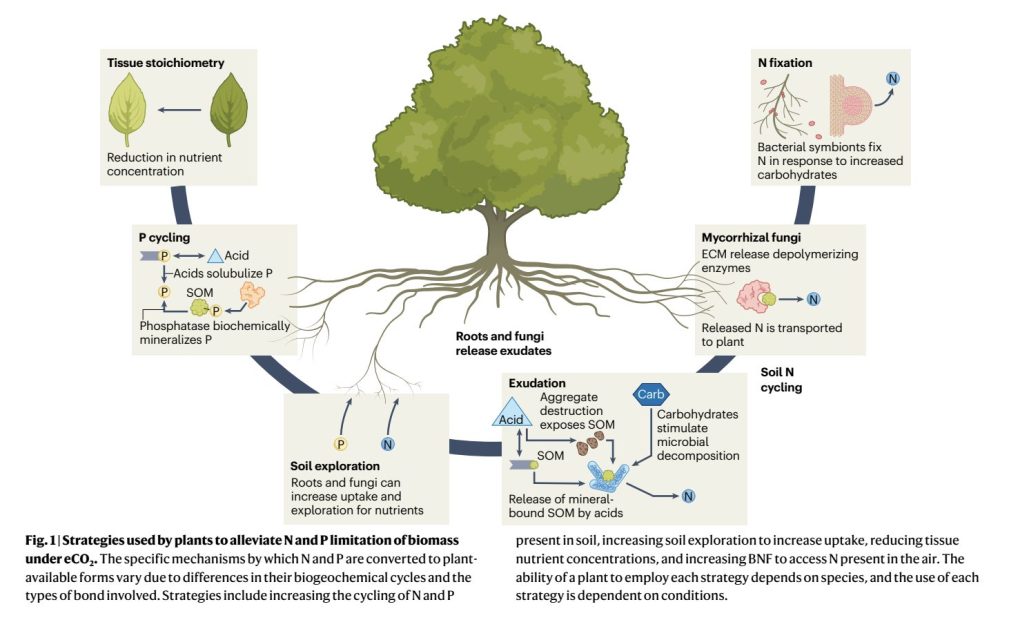Plant nutrient strategies could reshape carbon sink predictions

New study examines plants under elevated CO₂ and their impact on climate models
Each year, plants and trees absorb roughly one-third of the carbon dioxide (CO₂) that human activities release into the atmosphere. But as CO₂ levels continue to rise, scientists remain uncertain whether plants will keep absorbing as much carbon to slow down the pace of climate change.
A key reason for this uncertainty is plants need nutrients. For plants to grow and store more carbon, they need essential elements like nitrogen and phosphorus—often in limited supply in soils. Without enough of these nutrients, plants may not fully capitalize on elevated CO₂ levels.
In a review paper published in Nature Climate Change, researchers at MIT take a comprehensive look at how plants respond to nutrient availability and how it shapes the global carbon sink predictions. By analyzing experimental data and real-world observations, the team reveals that plants have evolved an array of strategies to access scarce nutrients under elevated CO₂ conditions. However, many of these strategies are missing from the Earth System Models (ESMs) scientists use to project climate futures and inform global policy.
“There are two main types of Earth system models, those that include only the carbon cycle and those that incorporate nitrogen and phosphorus cycles to varying degrees,” explains Trevor Cambron SM 25′, lead author of the study in the Terrer Lab at MIT.
The researchers argue that ignoring the ways plants adapt to nutrient scarcity, especially under rising CO₂ can cause models to underestimate the carbon storage potential of terrestrial ecosystems.
Plants and Nutrient Shortages
When CO₂ levels rise, plants can grow more—but only if their nutrient needs are met. Cambron and his colleagues examined several ways plants respond when nutrients are in short supply.
“One strategy is teaming up with soil bacteria that convert atmospheric nitrogen into forms plants can use, a process known as nitrogen fixation,” says Cambron. Plants also use increased root biomass to plant their roots deeper in the soil to find water and nutrients in the soil they need to grow. Cambron also says, “plants will release carbon compounds into the soil to trigger bacteria to decompose the organic matter and release the nitrogen; that’s called the priming effect,” he adds. Other strategies plants use to make up for limited nutrients is a process called mycorrhizal associations, when plants form partnerships with fungi that live on their roots. The fungi act like extra roots, helping the plant absorb more nutrients and water and in return provide funghi with some of the sugars it needs to grow. When nutrients are limited, plants can also use less nitrogen in their stems and leaves to grow, a process Cambron calls, “reduced tissue nutrient concentration.” Which strategy a plant uses depends on species, environmental conditions, and microbial communities in the soil.
“These strategies are highly adaptive,” says Cambron. “And if we don’t represent them in models, we risk underestimating how much carbon land ecosystems can continue to absorb.”

Implications for Climate Models
Current Earth System Models vary widely in how they simulate nutrient cycles. Some exclude plant nutrient acquisition strategies altogether, especially mechanisms that help overcome nitrogen limitations. As a result, they tend to predict the lowest possible carbon uptake when CO₂ levels increase.
“Recent years have seen more effort to integrate nutrient constraints into models,” says senior author César Terrer, associate professor in the Department of Civil and Environmental Engineering at MIT. “But we still need to reduce the uncertainty about how plants respond to elevated CO₂, especially in terms of nutrient acquisition.”
Experimental data show that these plant strategies are not just theoretical. In long-term CO₂ enrichment experiments lasting more than three years, ecosystems employing these strategies absorbed about 11.8% more CO₂ on average.
Using this data, the researchers estimate that terrestrial ecosystems could store up to 396 billion metric tons of carbon, compared to the 319 billion tons predicted by current models—a potential 25% increase in projected carbon sequestration.
The review paper highlights a critical gap: most models don’t yet capture the full complexity of how plants get the nutrients they need. This oversight could be significantly skewing projections of the global carbon sink.
“Plants have evolved these incredibly sophisticated strategies to acquire nutrients,” says Terrer. “But they’re largely absent from the models we use to predict our climate future.”This work is supported by the National Science Foundation under Grant No. DEB-233905.
Share on Bluesky


